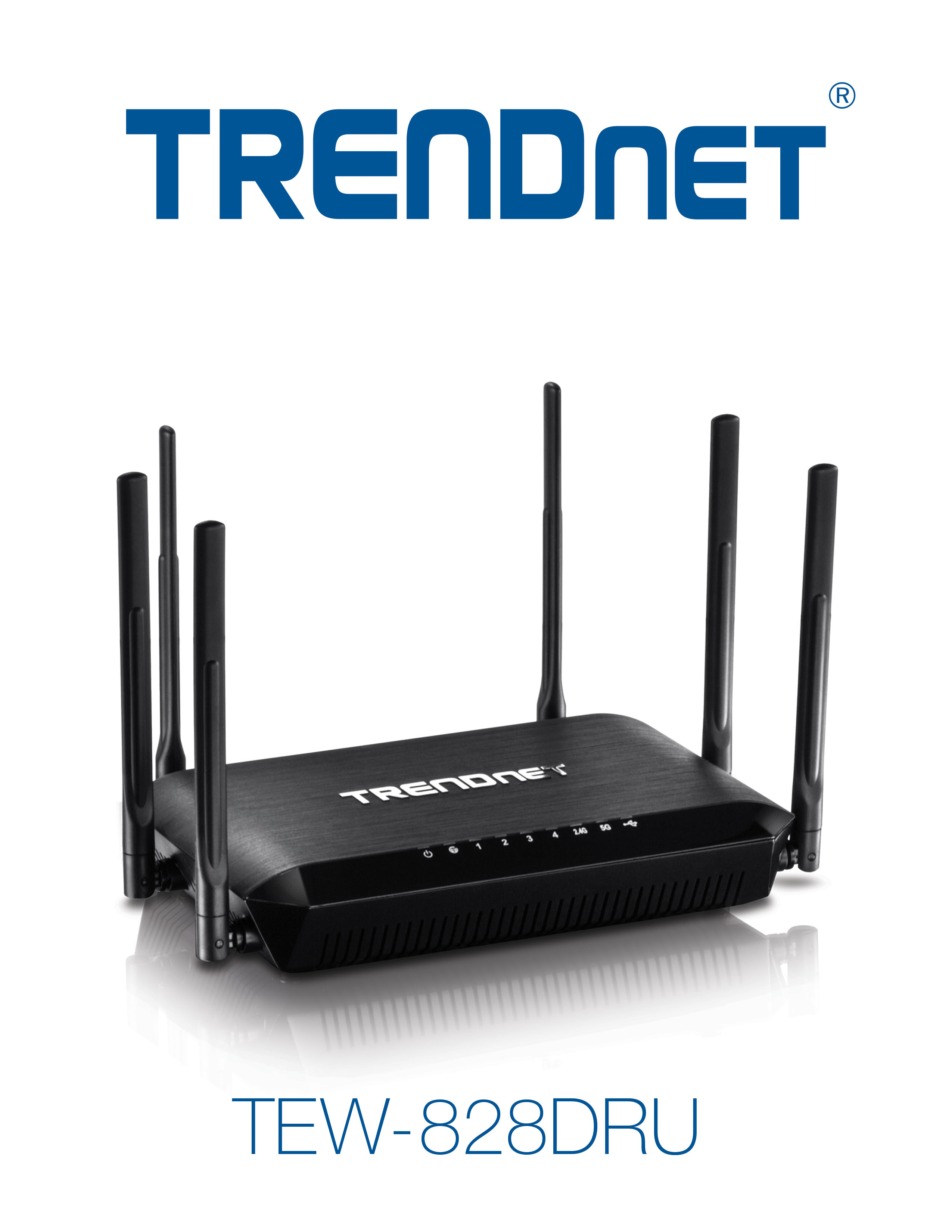TRENDnet Announces AC3200 Router With Tri-Band Support
TRENDnet is preparing to ship the TEW-828DRU, a new router with the 802.11ac standard and triple-band transmission support.
This new router will be the flagship model for TRENDnet's 802.11ac line. The key features that set this router above TRENDnet's AC1900 are the ability to transmit three wireless bands simultaneously and a higher-performance dual-core internal processor running at 1 GHz.
The naming of these devices might make some users who already have AC1900 devices think that performance will increase substantially with this router. Although the AC3200 router is rated to transmit 3.2 Gbps and the AC1900 routers are only rated for 1.9 Gbps of data, that 3.2 Gbps is the total amount of data across all bands.
Being able to transmit over three wireless bands at the same time is a useful feature, as it helps to reduce internal network traffic, which can help performance, although it doesn't necessarily increase bandwidth.
Inside of a network, many devices are typically connected to the router, but the router does not transmit data to them all simultaneously. Instead, the router jumps from device to device, transmitting data one at a time. When many devices are connected to the network and using the Internet, however, this can increase latency.
If the router is capable of transmitting over multiple bands, latency can therefore be reduced when multiple devices are connected. The AC3200 is capable of transmitting up to two 5 GHz bands at 1300 Mbps each, while a third band transmits on the older, more common 2.4 GHz standard with 600 Mbps of bandwidth.
The result is that on congested networks with many active connected devices, the wireless network that can transmit on more bands should decrease latency, but few if any wireless devices are capable of using two 5 GHz bands simultaneously. As a result, the expected performance for individual systems should not be expected to increase past the 1300 Mbps speed.
Get Tom's Hardware's best news and in-depth reviews, straight to your inbox.
The dual-core processor inside should also help to reduce latency on congested networks and take advantage of the tri-band capabilities. Another important feature of the router is a USB 3.0 port, in addition to a USB 2.0 port, which should allow for network attached storage through the router.
The router also boasts a series of security features such as OpenVPN, and it comes pre-encrypted with a Wi-Fi password, so users who don't want to configure the Wi-Fi password won't need to.
The TEW-828DRU is $279.99 (MSRP), and it comes with a 3-year limited warranty.
Follow us @tomshardware, on Facebook and on Google+.
-
amk-aka-Phantom Read "tri-band" and got excited, expecting the router to support 802.11ad... disappointed.Reply -
heffeque I wish libraries, airports and other public wifi places used these new AC routers. When there's a lot of people connected, the connection is usually pretty deficient. Updating to these AC3200 should help A LOT.Reply -
big_tiger 3.2 Gbps of total wifi throughput, but what about the LAN side, 1Gbps? How many wireless clients can it handle?Reply -
Thudo Read "tri-band" and got excited, expecting the router to support 802.11ad... disappointed. -- Whooaaa there: AD is out yet? Radified long time ago but no where ready for the consumer market just yet..Reply -
digitaldoc ReplyRead "tri-band" and got excited, expecting the router to support 802.11ad... disappointed. -- Whooaaa there: AD is out yet? Radified long time ago but no where ready for the consumer market just yet..
Supposedly coming this Fall sometime for 802.11ad.
-
digitaldoc ReplyOkay, why would you want 1300Mbps if you only have about 15-20Mbps?
Probably not too useful, but some folks can use this bandwidth for file transfers on their network.
-
amk-aka-Phantom ReplyWhooaaa there: AD is out yet? Radified long time ago but no where ready for the consumer market just yet..
I don't think it will be used for Wi-Fi, really... it's on 60 GHz band and has a very short range, BUT 7 Gbps throughput... Intel is using it for wireless docking stations, demo'd already in the end of January. Some new ultrabooks/convertibles can already be configured with Intel's new Wireless-AC 17265 adapter which supports REAL tri-band (2.4/5/60 GHz) and thus enables wireless docking.
Probably not too useful, but some folks can use this bandwidth for file transfers on their network.
Exactly, and it's not "not too useful", it's VERY useful for this purpose. Keep in mind that real-world speeds are far lower than rated speeds. For instance, with 2x2 Wireless-AC 7260 in my laptop I was only able to get ~50 MB/s (=400 Mbps) instead of the rated 867 Mbps using a TP-LINK Archer C7. I store all my data on a NAS and though I have a gigabit LAN wired everywhere it's needed, high-speed wireless is also great to have. Of course, this particular router would only be better than a normal 802.11ac one if you have multiple 802.11ac devices accessing the NAS simultaneously.
